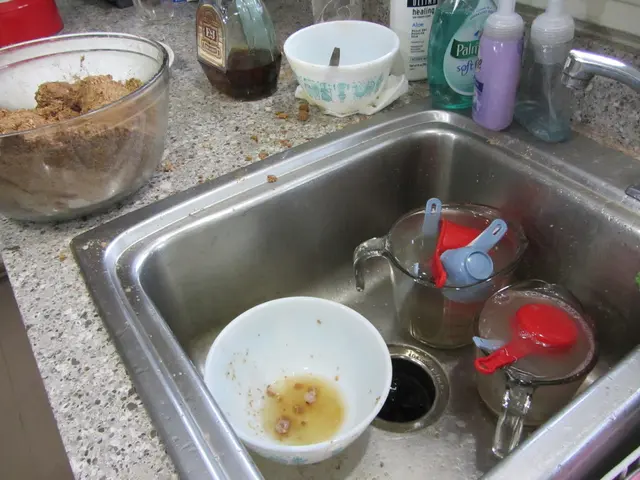Tips for Invigorating and Radiant Skin Transformation
As the winter season begins to wind down, many individuals may notice their skin losing its freshness and vitality. Excessive sun exposure can leave a lasting impact, causing dark spots, damage, and a loss of radiance. However, there are effective methods to restore youthful-looking, smooth, and fresh skin.
A combination of topical care and professional treatments offers the best results for skin rejuvenation. **Moisturizers** are fundamental in repairing the skin barrier and hydrating sun-damaged skin. Using moisturizers with ingredients like hyaluronic acid, ceramides, or antioxidants supports skin healing and hydration.
**Exfoliants** help remove dead, sun-damaged skin cells, encouraging the growth of new, healthier skin. Gentle chemical exfoliants such as alpha hydroxy acids (AHAs) or beta hydroxy acids (BHAs) can improve texture and radiance, but should be used carefully to avoid further irritation.
**Chemical Peels** apply controlled chemical solutions to exfoliate the outer skin layers, promoting regeneration and fading pigmented lesions from sun damage. Peels containing tyrosinase inhibitors can inhibit melanin production and lighten sun spots. It is important these are administered by experienced practitioners, especially for deeper skin tones, to avoid adverse effects.
**Intense Pulsed Light (IPL)** treatment is highly effective for sun damage, redness, and pigmentation. IPL uses broad-spectrum light wavelengths absorbed by melanin and hemoglobin, fragmenting dark spots and vascular lesions. It typically requires a series of 3-5 treatments spaced about a month apart for optimal results. IPL improves skin tone, diminishes sun spots, and reduces redness with minimal downtime, but sun protection after treatment is crucial.
**Laser therapies** are considered the gold standard for targeting sun damage at deeper layers. Lasers like fractional resurfacing stimulate collagen remodeling, tighten tissue, and improve dermal density damaged by UV. They can precisely target pigmentation, vascular changes, fine lines, and texture irregularities. Popular options include ablative and non-ablative lasers, with varying downtime depending on the intensity. Combining laser with microneedling or biostimulatory injectables can enhance collagen production and DNA repair.
**Microneedling** creates micro-channels in the skin to stimulate natural healing processes and collagen production. When combined with agents like exosomes, it enhances skin repair, reduces inflammation, and boosts radiance, complementing laser and IPL treatments.
In summary, optimal skin rejuvenation after excessive sun exposure generally requires a multifaceted approach combining daily skincare (moisturizers and gentle exfoliants) with professional interventions such as chemical peels, IPL, and laser treatments to address pigmentation, texture, and structural damage. Treatment choice depends on skin type, extent of damage, and downtime tolerance, and should be guided by a qualified dermatologist or skin specialist.
Remember, maintaining a balanced diet and staying hydrated can also contribute to maintaining a youthful, glowing skin. If you are experiencing a loss of radiance or a sun-kissed glow, consider consulting an experienced doctor at an aesthetic clinic for professional treatments. The main motto during summer holidays is to enjoy life, but this also includes taking care of your skin from sun damage.
For more information, please visit our website at hello@our website or contact us at 65-6801-4000. Our clinic, located at 9 Scotts Road Pacific Plaza, Scotts Medical Center #08-07, Singapore - 228210, offers a range of treatments to help you achieve rejuvenated skin.
[1] Aesthetics, Plastic Surgery and Reconstructive Medicine. (2021). Skin Rejuvenation Techniques. Retrieved from https://www.aestheticsplastic.sg/skin-rejuvenation-techniques/ [2] American Academy of Dermatology. (2020). Skin Rejuvenation: A Guide to Cosmetic Procedures. Retrieved from https://www.aad.org/public/skin-hair-nails/cosmetic-treatments/skin-rejuvenation [3] American Society for Dermatologic Surgery. (2020). Laser Resurfacing. Retrieved from https://www.asds.net/public-education/procedures/laser-resurfacing [4] European Academy of Dermatology and Venereology. (2019). Skin Rejuvenation: An Update on the Latest Techniques. Retrieved from https://www.european-academy-dermatology.eu/media/7811/skin-rejuvenation-an-update-on-the-latest-techniques.pdf [5] International Society for Dermatology. (2018). Skin Rejuvenation: A Review of Current Techniques. Retrieved from https://www.ncbi.nlm.nih.gov/pmc/articles/PMC6147350/
Engaging in science-based health-and-wellness practices can support the skin's overall health and vitality, complementing professional skin-care treatments. Adopting a fitness-and-exercise regimen may improve circulation and boost the skin's natural healing abilities, further aiding its rejuvenation process.





